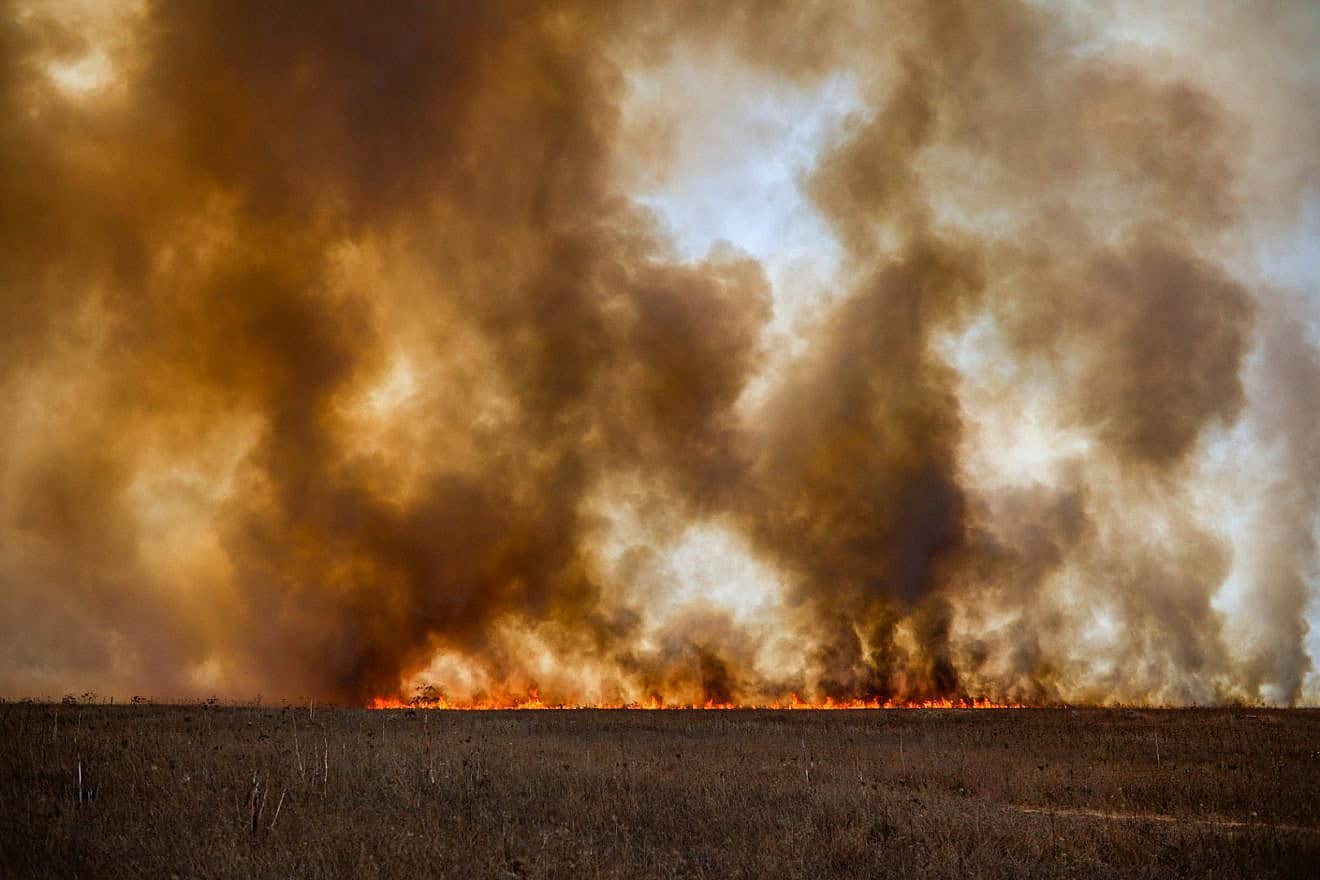Hezbollah terrorists in Lebanon launched a massive rocket and drone assault on northern Israel on Thursday morning, scoring hits on structures in the Galilee and Golan Heights.
The initial phase of the combined attack lasted around 40 minutes, after which renewed air-raid sirens sounded in the Western Galilee, including in the cities of Acre and Nahariya.
🚨Sirens sounding across northern Israel🚨 pic.twitter.com/LXFjuEXS3A
— Israel Defense Forces (@IDF) July 4, 2024
The Israel Defense Forces confirmed that it detected “suspicious aerial targets and launches that crossed [into Israel] from Lebanon,” adding that the attack included some 200 rockets and 20 suicide drones.
The army stated IDF air-defense personnel and Israeli Air Force fighter jets managed to successfully intercept an undisclosed number of projectiles.
In response to the attacks, artillery forces and IAF jets attacked rocket and drone launching positions in Southern Lebanon, the military said.
מטוסי קרב של חיל האוויר בשיתוף עם פיקוד הצפון תקפו מטרות של ארגון הטרור חיזבאללה במרחבים רמיה וחולא שבדרום לבנון>> pic.twitter.com/xlXQZRLeOy
— צבא ההגנה לישראל (@idfonline) July 4, 2024
There were no immediate reports of casualties in Israel, though the rocket impacts caused damages and sparked fires in the border area.
Medics were dispatched to areas where hits were reported, the Magen David Adom emergency response organization said in a post on X.
Moshe Davidovich, who heads the Mateh Asher Regional Council in the Western Galilee, told Israel’s Kan News broadcaster that one of the projectiles hit a kindergarten where a summer camp was taking place.
“It’s a miracle that there were no casualties,” he said. “They all went to the protected space, but there was damage to a kindergarten.”
תיעוד: שרפות פרצו ברמת הגולן ובאצבע הגליל כתוצאה מנפילות בשטחים פתוחים@Doron_Kadosh
(צילום: לפי סעיף 27א') pic.twitter.com/01bn2YGUFs— גלצ (@GLZRadio) July 4, 2024
The Iran-backed Hezbollah terrorist proxy took responsibility for the aerial attacks in a statement cited by Lebanon’s Al-Akhbar daily.
An unnamed source in the terrorist group told Qatar’s Al Jazeera that the raid came in response to the IDF’s strike on Wednesday that killed top Hezbollah commander Muhammad Nimah Nasser.
“We launched more than 20 drones at many Israeli positions in the Galilee and more than 200 rockets of various types at Israeli positions in the Galilee and the Golan,” the channel cited the terrorist as saying.
Nasser, who commanded Hezbollah’s Aziz unit responsible for terrorist operations on the border with Israel, was one of the group’s most senior leaders to be killed since the start of the war in the north on Oct. 8.
According to Reuters, Nasser was of the same rank and importance as Sami Taleb Abdullah, who was killed by an Israeli Air Force strike last month.
Confirming the strike, the IDF said, “Nasser entered his position in 2016 and led the rockets and anti-tank missile attacks from southwestern Lebanon towards Israeli civilians, communities and security forces.
“He was the counterpart of Sami Taleb Abdullah, the commander of the Nasser Unit,” the military statement continued. “Together, they served as two of the most significant Hezbollah terrorists in Southern Lebanon.”
After Abdullah was killed in June, Hezbollah launched one of its largest barrages of rockets and explosive drones towards the Jewish state’s north, sparking large fires and lightly wounding two civilians.
Hezbollah has attacked Israel’s north nearly every day since Oct. 8, firing thousands of UAVs, rockets and anti-tank missiles at Israeli towns, killing more than 20 people and causing widespread damage. Tens of thousands of Israeli civilians remain displaced due to the violence.
Hezbollah leader Hassan Nasrallah has vowed to continue the attacks until a “complete and permanent ceasefire” is reached in Gaza.
On Wednesday, Israeli Defense Minister Yoav Gallant told troops in the south that the IDF is “striking Hezbollah very hard every day, and we will also reach a state of full readiness to take any action required in Lebanon or to reach an arrangement from a position of strength.”
Tanks currently leaving the Gaza Strip “can reach as far as the Litani,” he stated, in reference to the Lebanese river some 10 miles north of the Israeli border.
“We prefer a deal, but if reality forces us, we will know how to fight,” concluded Gallant, according to a readout from his office.
Last month, the IDF formally “authorized and validated” operational plans for a campaign aimed at pushing Hezbollah north of the Litani, in accordance with 2006’s U.N. Security Council Resolution 1701 that ended the Second Lebanon War.
Jerusalem is considering launching the operation as early as this month, Germany’s Bild reported on Tuesday, citing diplomatic sources.


























